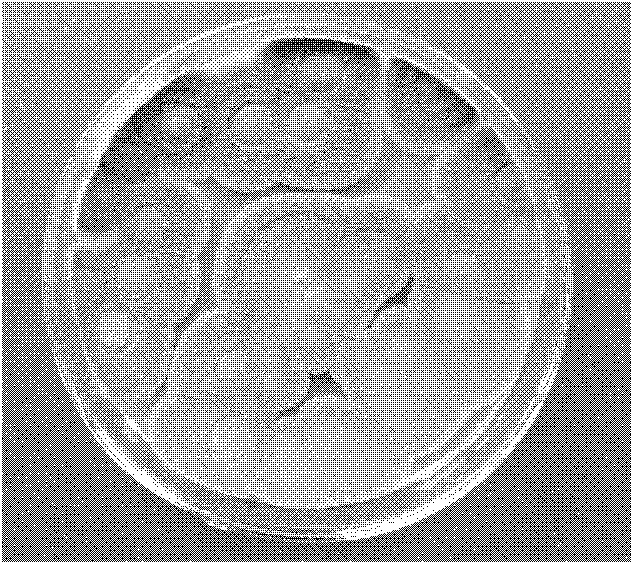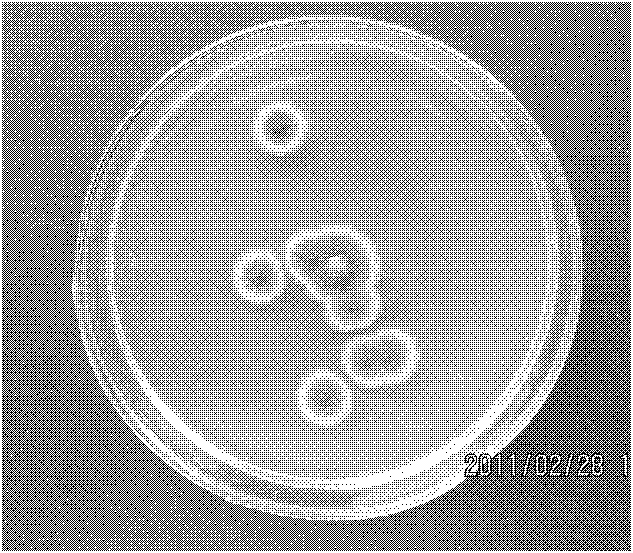Polygonum cuspidatum stem endophytic fungus J1 capable of converting polydatin to resveratrol
A technology of Polygonum cuspidatum and microbial strains, applied in microorganisms, fungi, microorganism-based methods, etc., can solve the problems of cumbersome operation, low specificity, and time-consuming active ingredients.
- Summary
- Abstract
- Description
- Claims
- Application Information
AI Technical Summary
Problems solved by technology
Method used
Image
Examples
Embodiment 1
[0022] The stems of wild Polygonum cuspidatum collected from Tianxinping Village, Lianyuan, Hunan Province were washed with sterile water, and then dried with sterile filter paper. (Following aseptic operation) Soak in 75% ethanol for 3 to 5 minutes, rinse with sterile water for 3 to 4 times, disinfect with 0.1% mercuric chloride for 30 seconds, and then sterilize with 75% ethanol for 1 minute. Cut off the phloem of the roots and stems, and cut the xylem into small pieces of 0.5 cm × 0.5 cm with sterile scissors. Rinse with sterile water 3 to 4 times, and grind into a slurry in a sterilized mortar. After diluting the grinding slurry 10 times with sterile water, pipette 1ml of the grinding diluent, and routinely spread it on the primary screening medium. Each material was cultured in parallel 3 times at 28°C for 72-120 hours, and well-growing colonies of different shapes were selected and separated on a PDA plate. After 72 hours of cultivation at 28°C, a single colony was take...
Embodiment 2
[0024] Adopt HPLC method to detect the content of polydatin and resveratrol in the fermented liquid:
[0025] Preparation of reference solution and drawing of standard curve
[0026] Accurately weigh 0.2 mg of standard resveratrol and polydatin in 1 mL of methanol, mix well to obtain a stock solution containing 0.2 mg / mL of resveratrol and polydatin reference substance, and set aside. Precisely draw 100, 200, 300, 400, 500 μL of the reference substance solution and dilute it into 1 mL with methanol, and mix well to make reference substances of different concentrations. Determine the peak area integral value according to the chromatographic conditions, take the peak area Y as the ordinate, and the injection concentration X as the abscissa, draw a standard curve, see Figure 5 and Image 6 , and calculate the regression equation.
[0027] Sample solution preparation
[0028] Insert bacterial strain J1 of the present invention in 10% Polygonum cuspidatum decoction (pH nature)...
PUM
| Property | Measurement | Unit |
|---|---|---|
| diameter | aaaaa | aaaaa |
Abstract
Description
Claims
Application Information
 Login to View More
Login to View More - Generate Ideas
- Intellectual Property
- Life Sciences
- Materials
- Tech Scout
- Unparalleled Data Quality
- Higher Quality Content
- 60% Fewer Hallucinations
Browse by: Latest US Patents, China's latest patents, Technical Efficacy Thesaurus, Application Domain, Technology Topic, Popular Technical Reports.
© 2025 PatSnap. All rights reserved.Legal|Privacy policy|Modern Slavery Act Transparency Statement|Sitemap|About US| Contact US: help@patsnap.com



